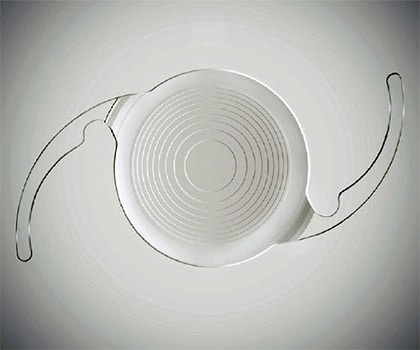Provo’s Trusted Source to Prepare for Cataract Surgery
At the Eye Clinic & Aesthetics of Provo, we provide Cataract Co-Management services for patients diagnosed with cataracts. As primary eye care providers, Dr. Lewis and Dr. Smith are often the first to diagnose and educate our patients about their cataracts. Patients look to us for guidance from the moment we inform them of the presence of a cataract to the final postoperative visit.
Cataract co-management begins at the first diagnosis of cataracts, progresses until the cataracts are visually significant, and continues through your postoperative care. Successful cataract co-management includes you, the educated patient, Dr. Lewis or Dr. Smith, and a highly skilled cataract surgeon.

Improve Cataract Surgery Recovery and More
Cataract co-management involves a collaborative effort between patients, referring eye doctors, and surgeons to provide the best care and outcomes for those undergoing cataract surgery. By combining the expertise of both optometrists and surgeons, patients receive comprehensive care from highly trained professionals while maintaining the trust and rapport they’ve established with our primary eye doctors.
This shared approach enhances the surgical experience and improves patient compliance with post-operative care, leading to better results and strong loyalty to their optometrists. Ultimately, cataract co-management benefits all parties involved by delivering top-quality care and ensuring that patients receive the most appropriate treatment for their individual needs.
Symptoms of Cataracts
What is Included in Cataract Co-Management Service?
Some patients may show signs of developing cataracts but are not yet candidates for surgery. The initial treatment for symptomatic cataracts may include updating your prescription (eyeglasses or contacts). You may also benefit from wearing sunglasses with specific tints or filters to improve ultraviolet (UV) protection. We can also provide you with lenses treated with antireflective coatings to help with contrast and decrease glare.
When it is appropriate to proceed with cataract surgery we will work closely with a cataract specific surgeon to help you recover the vision temporarily lost from cataract formation. There are many types of cataract surgeries and replacement lens options. Dr. Smith and Dr. Lewis can help you understand the pros and cons and communicate with the cataract surgeon on your behalf.

Provo’s Cataract Treatment FAQs
The decision of which eye to correct first when dealing with cataracts in both eyes is a personalized one, dependent on factors such as cataract severity, eye health, and patient preference.
Eye care professionals generally recommend waiting approximately one to two weeks between surgeries to minimize the risk of complications or infection. In the case where cataracts are present in both eyes, surgery is typically performed on the non-dominant eye first, followed by the dominant eye within a 1-2 week timeframe to reduce the risk of complications.
Cataract surgery comes with a host of benefits, such as improved vision, enhanced independence, long-lasting results, and correction of other visual defects. It provides individuals with the opportunity to see the world clearly once again, but as with any medical procedure, there are potential risks and disadvantages to consider.
These include surgical risks like infection and bleeding, possible changes in pre-existing eye conditions, the need for postoperative care, temporary visual disturbances, and additional financial considerations for advanced lens options. Despite these considerations, cataract surgery is generally safe and effective, offering a chance for a better quality of life for those suffering from cataracts.
Our eye care doctors can discuss your options thoroughly and help you weigh the best solutions for your unique circumstances.
Cataracts typically develop due to aging or injury-induced changes in the eye’s lens structure, causing proteins and fibers to deteriorate and impair vision. In addition to these factors, inherited disorders, certain health conditions like diabetes, previous eye surgeries, and prolonged use of steroid medications can also heighten the risk of cataracts.
The various types of cataracts (including age-related, congenital, secondary, and traumatic) each have specific causes and implications, ranging from developmental factors to underlying diseases and injuries. Factors like smoking, alcohol consumption, diabetes, poor nutrition, UV sunlight exposure, and certain medications have been identified as potential contributors to the development of cataracts.
Request an Appointment
Don’t let cataracts compromise your vision and quality of life. If you’re affected by cataract symptoms, schedule an evaluation to explore the benefits and potential risks of surgery and take the first step towards a brighter future.
Leading the co-management effort for our patients is an essential part of our practice. If you know or suspect you have cataracts, schedule an appointment with Dr. Smith or Dr. Lewis at the Eye Clinic & Aesthetics of Provo today. Call (801) 373-4550 or request an appointment using the link below.
